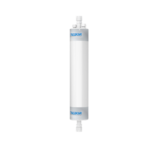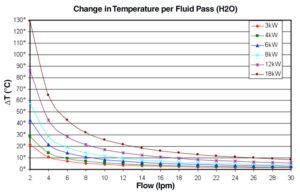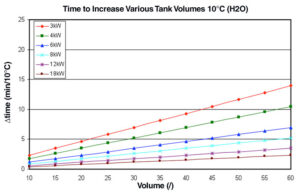Chemical Heater Selection Guide

In today’s world, we constantly depend on electronics such as computers, smartphones, automobiles, medical equipment, and much more. We rely on technologies that utilize key components made by state-of-the-art facilities, better known as “fabs” in the semiconductor industry. Semiconductor fab manufacturing processes use up to 430 different chemicals to manufacture a wafer; 65% are liquids, and 33% are gas phases.[1]
Depending on the application and process, those chemistries must be heated up to 100ºC / 212ºF. The Trebor® Inline Chemical Heater[2] is unlike any other heating technology on the market. It utilizes thin film on quartz electric resistive technology with a virgin PFA tube to create an ultra-pure fluid path. Quartz products exhibit excellent chemical resistance to most acid, alkaline, and neutral materials (exceptions being hydrofluoric acid and KOH).
You can use single-pass or recirculation heating when sizing the Trebor® Inline Chemical Heater. We recommend adding a 20% buffer to the power requirement you’ll find from the calculation as a safety control factor. The following graphs are general information showing the response of water when heated. Fluids other than water respond differently and vary in requirements.
Works Cited
[1] Sunju Kim, Chungsik Yoon, Seunghon Ham, Jihoon Park, Ohun Kwon, Donguk Park, Sangjun Choi, Seungwon Kim, Kwonchul Ha, and Won Kim. Chemical use in the semiconductor manufacturing industry. 24 OCT 2018. <https://www.ncbi.nlm.nih.gov/pmc/articles/PMC6237170/>.
[2]Inline Chemical Heater. n.d. <https://treborintl.com/products/inline-chemical-heater/>.





